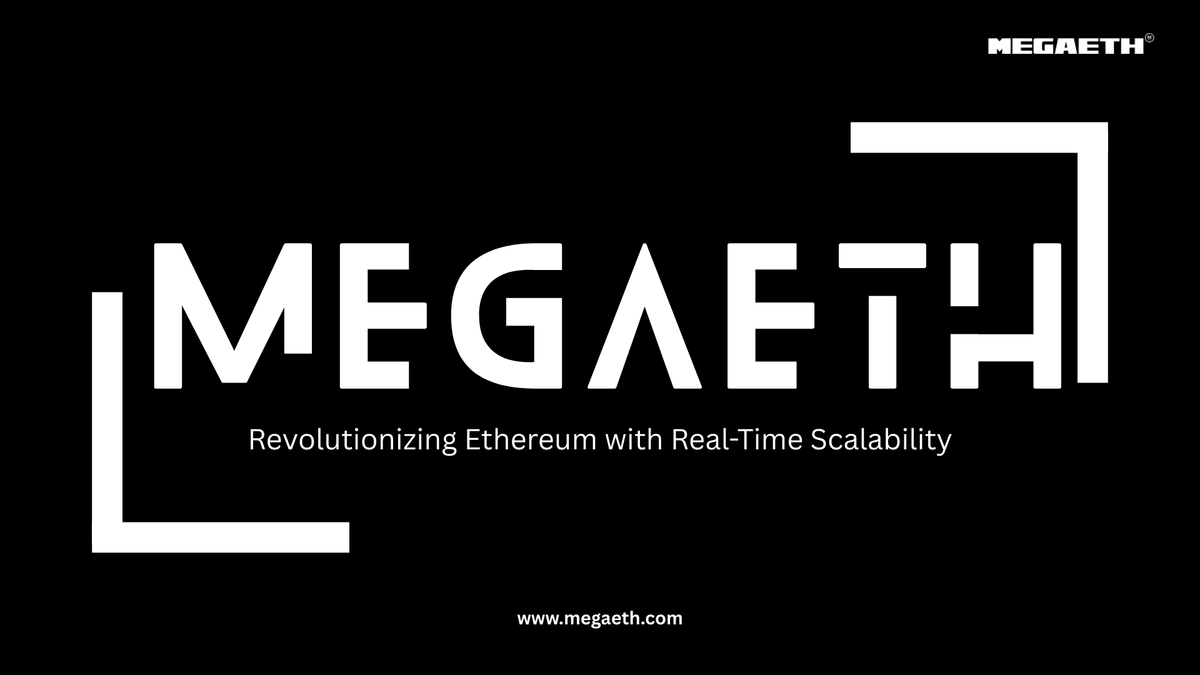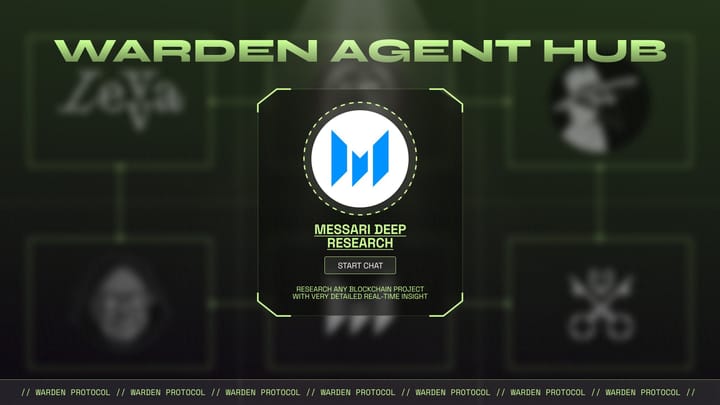MegaETH: Revolutionizing Ethereum with Real-Time Scalability

Introduction to MegaETH: A Real-Time Ethereum Solution
MegaETH is a Layer 2 solution designed to enhance the Ethereum blockchain, often called "real-time Ethereum." It aims to address Ethereum’s scalability and performance limitations by introducing real-time transaction capabilities, with a target of over 100,000 transactions per second (TPS) and sub-millisecond latency. This positions MegaETH as a bridge between traditional Web2 applications and the decentralized world of blockchain, making it suitable for high-frequency use cases like decentralized finance (DeFi), gaming, and autonomous worlds.
The project is part of the broader "World Computer" vision, described as a single, composable, open, and permissionless state machine that can host programs with minimal trust. MegaETH’s mission is to front-run the next adoption and developer meta, accelerate applied cryptography, and unlock novel applications not yet seen in the crypto space, as outlined on its official website (MegaETH).
Motivation: Addressing Ethereum’s Limitations
Ethereum, while revolutionary, has faced significant challenges that have hindered its scalability and user adoption. These include:
- High Gas Fees: Transaction costs can skyrocket during high demand, making Ethereum less accessible for everyday users.
- Scalability Issues: Network congestion often leads to slower transaction times, impacting user experience.
- User Experience: Managing Ethereum wallets and dealing with gas fees can be complex, deterring new users.
- Performance Bottlenecks: Ethereum’s base layer struggles with high state access latency, lack of parallel execution, and block gas limits, limiting its ability to support real-time applications.
MegaETH was created to tackle these issues, offering a high-performance Layer 2 solution that maintains compatibility with Ethereum while pushing the boundaries of speed and efficiency. It aims to make Ethereum more competitive with other high-performance blockchains like Solana, as discussed in a recent article on Cointelegraph (MegaETH launch could save Ethereum).
Technical Architecture: How MegaETH Works
MegaETH’s architecture is built on node specialization, a design philosophy that optimizes performance by assigning specific roles to different types of nodes. This includes:
- Sequencers: Responsible for ordering and executing transactions, with only one active sequencer at a time to ensure consistency.
- Full Nodes: Receive and apply transactions without re-executing them, relying on provers for validation. These can operate on less powerful hardware, making them more accessible.
- Provers: Verify blocks independently and operate out of order, reducing the network workload and improving efficiency.
This structure allows MegaETH to achieve its ambitious performance targets:
- TPS: Over 100,000, far surpassing Ethereum’s base layer.
- Block Times: Less than 0.01 seconds, ensuring sub-millisecond latency.
- No Block Gas Limits: Developers can deploy complex smart contracts without gas constraints, aligning MegaETH’s capabilities with Web2 applications.
The technology also addresses several performance bottlenecks:
- High State Access Latency: Optimized using advanced data structures like Non-Ordered Merkle Trees (NOMT), reducing the time needed for state updates.
- Lack of Parallel Execution: MegaETH explores parallel execution to increase throughput, as traditional Ethereum Virtual Machine (EVM) execution is sequential.
- Interpreter Overhead: Techniques like just-in-time (JIT) compilation minimize bytecode interpretation overhead, with research suggesting a potential 2x speedup in production environments.
- State Synchronization: For high transaction volumes (e.g., 100,000 ERC-20 transfers per second), MegaETH employs compression techniques to manage bandwidth, requiring 19x compression for 100,000 swaps per second, as detailed in its research section (MegaETH Research).
- State Root Updates: Handling 300,000 keys per second requires efficient database reads, with NOMT supporting 50,000 leaf updates per second for 134 million keys.
- Supporting Infrastructure: MegaETH ensures RPC nodes and indexers can handle increased loads, maintaining ecosystem robustness.
Hardware requirements for nodes vary, as shown in the following table, reflecting the specialized nature of the network:

This design philosophy, encapsulated as "measure, then build," ensures MegaETH reaches hardware limits with clean-slate solutions, focusing on end-to-end performance gains.
Ongoing Testnet: Performance and Milestones
MegaETH’s public testnet was launched in early 2025. On its first day, it achieved an impressive 20,000 TPS, as discussed in a Reddit community post (High-throughput Ethereum scaler MegaETH debuts). Before the public launch, private testing showed 15,000 TPS with 1.5 gigagas of gas usage, which is 60 times more than existing Ethereum rollups like Base, according to Cointelegraph (MegaETH launch could save Ethereum).
The testnet’s performance targets are ambitious, aiming for:
- Future TPS: Scale up to 100,000 TPS.
- Future Gas Usage: Handle 10 gigagas.
- Execution Times: Achieve 10 milliseconds or less, compared to 250ms for the fastest existing rollup, Arbitrum.
These milestones highlight MegaETH’s potential for real-time applications, such as autonomous worlds and high-frequency trading, with block intervals less than 100ms and transaction processing within 10ms, leveraging external components like EigenDA (EigenDA) for data availability.
Benefits and Potential Impact
MegaETH’s advancements offer significant benefits for various stakeholders:
- For Users: Faster transaction times and lower fees make Ethereum more accessible, encouraging broader adoption. A beginner’s guide on Trust Wallet’s blog (MegaETH: A Beginner's Guide) notes that it addresses the straggler problem, improving user experience.
- For Developers: The elimination of block gas limits and high TPS enables the development of complex dApps, potentially leading to a surge in innovation.
- For Ethereum: By enhancing scalability, MegaETH strengthens Ethereum’s position against competitors like Solana, retaining its status as a go-to platform for decentralized applications.
Additionally, MegaETH’s focus on real-time capabilities could unlock new use cases, such as decentralized finance applications requiring instantaneous settlement or gaming platforms needing low-latency transactions.
Critical Perspective: Balancing Performance and Decentralization
MegaETH’s performance gains come with trade-offs, particularly around decentralization. The reliance on specialized nodes, especially sequencers, could centralize power and control, raising concerns among purists who prioritize Ethereum’s decentralized nature. A Cointelegraph article (MegaETH launch could save Ethereum) notes, “MegaETH promises to beat Solana at its own game and make Ethereum Great Again with 100,000 TPS. But is sacrificing decentralization worth it?”
However, MegaETH’s design delegates security and censorship resistance to base layers like Ethereum and EigenDA, maintaining a symbiotic relationship with the ecosystem. This approach allows for high performance while leveraging Ethereum’s decentralized foundation. As MegaETH develops, it will be crucial for the community to monitor how these trade-offs impact long-term security and decentralization.
Conclusion
MegaETH represents a significant advancement in blockchain technology, offering a scalable and high-performance Layer 2 solution for Ethereum. Its ongoing testnet, launched in early 2025, has already demonstrated remarkable performance, achieving 20,000 TPS on day one and targeting 100,000 TPS. By addressing Ethereum’s scalability challenges and introducing real-time transaction capabilities, MegaETH has the potential to make Ethereum more accessible, efficient, and competitive.
For users, developers, and the broader Ethereum ecosystem, MegaETH could unlock new possibilities for decentralized applications and real-time use cases. However, as with any technological innovation, it is essential to balance performance with decentralization and security. As MegaETH continues to evolve, it will be fascinating to see how it shapes the future of Ethereum and the blockchain industry as a whole.
Mitosis University is brought to you by MITOSIS, and you can keep in touch by following:
WEBSITE || X (Formerly Twitter) || DISCORD|| DOCS



Comments ()